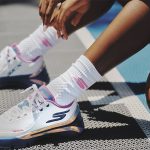Gildan Activewear, Inc. said significant weakness from its underwear and activewear segments were the primary catalysts for slumping sales and declining earnings for the third fiscal quarter ended July 5.
The Montreal, Quebec-based apparel manufacturer reported Q3 sales fell 19.2% to $307.8 million from $380.8 million in the third quarter of last year. Net earnings fell to $41.5 million, or 34 cents per diluted share, from $54.5 million, or 45 cents per diluted share, in the year-ago period. Included in the results is $3.4 million and $2.3 million, respectively, stemming from tax restructuring charges.
Gross margins in the quarter were 24.4% of total sales, down 220 basis points from 26.6% last year. Management attributed the margin hit to a lower net selling process for activewear, the negative impact of currency fluctuations, a more unfavorable product mix and higher cotton costs.
Sales of activewear and underwear were down 15.6% to $258.1 million from $305.9 million a year ago, while sales of socks fell 33.6% to $49.7 million from $74.9 million a year ago.
In a conference call with analysts, management attributed the decline in activewear and underwear to a more unfavorable product-mix — primarily as a result of a lower proportion of sales of higher-valued fleece and long-sleeve T-shirts — a 2.6% decline in net selling prices for activewear due to increased promotional activity compared to last year, the impact of the stronger U.S. dollar on Canadian/international sales and a 3.5% decline in unit sales volumes.
The company noted that a drop in unit sales came as a result of a 16.6% decline in overall industry shipments from U.S. wholesale distributors to U.S. screenprinters, which management said negatively affected Gildan shipments by approximately 1.5 million dozens of socks.
Likewise, fiscal Q3 was shortened by a week as compared to last years Q3, which impacted shipments by about 700,000 dozens. Also impacting sock sales for the quarter were the discontinuance of certain product lines and programs last year, which impacted Q3 by nearly 2 million dozens, and the timing impact of year-over-year fluctuations and inventories at the retail level.














